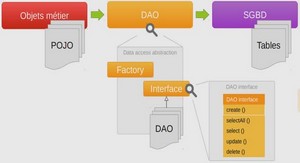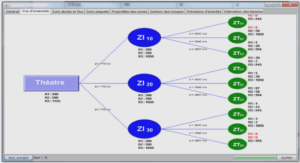FAB APPLICATION
Une application de la méthode FAB à une base des données des surcotes de pleine mer, c’est à dire la partie considérée comme aléatoire du niveau marin, est développée dans ce chapitre. La base de données est constituée par des sériés temporelles de surcotes de pleine mer systématiques provenant de 74 ports situés dans l’Atlantique, dans la Manche, dans la Mer d’Irlande et dans la Mer du Nord, et par 14 surcotes de pleine mer historiques. La première étape de la FAB méthode consiste à former des régions physiques par la méthode de clustering des tempêtes définie dans l’approche AFR. Cette méthode de clustering est fondée sur la définition de trois paramètres physiques (p, Δ, η). Pour des séries temporelles avec une différente durée, une analyse de sensibilité de ces paramètres est conseillée. La formation des régions physiques est recommandée pour une fenêtre temporelle dans laquelle la plupart des ma- régraphes sont en fonction. Les autres étapes de la méthode FAB sont réalisées exclusivement pour les ré- gions comprenant des sites avec des données historiques disponibles (Région 1 et Région 2). Les seuils optimaux sont évalués pour ces deux régions qui sont ensuite statistiquement vérifiées. Des niveaux de retour fréquentistes et bayésiens sont estimés et une comparaison préliminaire des résultats est mon- trée. Enfin, la méthode FAB est appliquée sur la même base de données sans surcotes historiques. Cette analyse supplémentaire permet d’indiquer le rôle des données historiques dans l’analyse régionale des événements extrêmes.
FAB method is applied to a database of systematic and historical skew surges illustrated in the following. This application permits the practical steps of the FAB methodology. Starting from a database of systematic and historical variables, this method enables the estimations of regional and local return levels. After the collection of systematic and historical data from different locations, FAB method re- quires to pool sites in homogeneous regions in order to form regional samples and to treat them with a statistical analysis. In particular, physical homogeneous regions are formed through the definition of three parameters p, Δ and η. These parameters leading the formation of storm clus- ters have to be calibrated for time series with different periods of observation. For this reason, a sensitivity analysis of these three parameters is performed in this application. This sensitivity analysis is recommended when the FAB method is applied to a database of time series with different recording periods. Moreover, it is important to recall that in the FAB application case of the paper illustrated in Annexe A, the three parameters to form physical homogeneous re- gions were not calibrated. In that case, the parameters used were the same proposed in the RFA approach.
Now, physical homogeneous regions can be statistically verified. A double threshold approach is used and so a statistical threshold has to be defined in every site of the region. The statistical threshold chosen corresponds to a number of storms λ per year above this threshold. This λ value is common for every site in the region. The optimal value of λopt,r has to be found for each physical region r in order to get the best performances of this methodology on the extreme estimations. The identification of the The regional extreme data sample is then formed and the degree of dependence as the local and regional credible durations are computed. The GPD distribution is estimated for the sample of regional storms considering the seasonality of skew surges in the frequentist framework. No seasonality on skew surges is considered in the estimations of Bayesian return levels. Fre- quentist and Bayesian regional return levels and frequentist and Bayesian local return levels of each site by the use of the local indexes are estimated. This can allow the comparison between frequentist and Bayesian estimations always recalling the different concept of probabilities that the two statistical inferences have (Annexe B).





